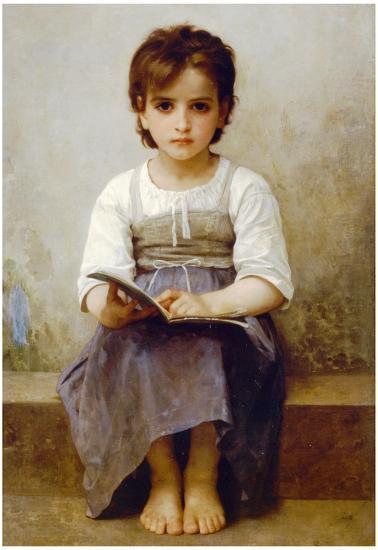A Happy and Prosperous New Year to my followry! May you be fruitful and multiply (for my benefit, right? Oh, never mind.)
Lately, I’ve been reading some 19th century American Catholic writers, to get a better feel for how the people involved thought and felt about those tumultuous times. Thomas Hecker, who is a Servant of God, is both loved and loathed, typically according to how ‘liberal’ or ‘conservative’ the critic is. He is baffling in some ways, vigorously defending the Church’s core teachings as one would expect a Servant of God to do, but then proposing ideas that, if they mean anything, don’t square with those vigorous apologetics. I’ll write more on this when I get a little farther. He and Brownson, two American Protestant converts who tower over the middle of the 19th century, have, each in his own way, incorporated aspects of their Protestant upbringing into their new Catholicism without, it seems so far, acknowledging any risk or downside.
Hecker focuses on the direct work of the Spirit in our lives. While of course the Church recognizes this aspect of our faith as central – the feast of the founding of the Church is Pentecost, after all – the Spirit is seen to act primarily through the Sacraments and supremely through the Eucharist. The most vigorously active saints, those whose lives most show forth the action of the Spirit in the world, are invariably those most devoted to the Eucharist. Hecker, in the softest of terms and with constant deference to the teaching authority and Sacraments of the Church, nonetheless sets up a conflict between the normal Magestarium and the life in the Spirit. He dwells at length on the perceived enervating effect of the Church’s Counter Reformation emphasis on obedience and authority, which culminated in Vatican I’s declaration of papal infallibility. He falls all over himself confirming how this emphasis on obedience was a good and necessary thing, but insists that it has, somehow, caused Catholics to be far more passive than is good for them. He points to contemporary troubles of the Church in Europe, where the politics in even majority Catholic countries were dominated by secularists and other anti-Catholics.
He makes passing reference to the Jesuits, who (at least, in their fundamental form) were *the most* obedient body in the Church, thumbing their noses at the Protestants by adding an additional vow of obedience to the Pope. Jesuits (as founded, and sometimes in practice) were both the most obedient AND the most active of orders. Meaning, whatever supposed problems (excessive? hard not to see this) obedience presents, it seems to have missed the contemporary Jebbies.
It all rings false. On the one hand, he is careful not to criticize obedience to the Church too directly, and to even praise it; on the other, he’s inescapably criticizing obedience as the source of the *political* passivity of Catholics, and proposing shifting focus to the Spirit as a remedy.
Not surprising, he is a sort of patron saint to the American ‘spirit of Vatican II’ crowd. As in their interpretation of the council documents, the spirit of what Hecker means is to be followed, even when it contradicts the actual words he wrote.

Love me some Bouguereau, but he’s *almost* doing that big eyes thing here.
Brownson shares with Hecker a tendency to see America as the next step in Salvation History. Men, freed from the shackles of a European history full of bad or at least outdated political ideas, finally build a near-Heaven on earth upon the foundational American ideas, which can only be sustained by the Catholic faith. To his credit, Brownson seems to have gotten over this ideas – the post-Civil War destruction of many of those supposedly foundational ideas, such as a minimal Federal government that respects the local rights of states – probably contributed to this.
Lots more to read. Just doing background at the moment, but both Brownson and Hecker have a lot to say about education. I want to know where they are coming from, first, before I get too deep into it. We need a term, say, Black Rabbit Holes or Rabbit Black Hole, to describe both the randomness and irresistable gravitational pull of the things that come up whenever one attempts a little scholarly research…
From the sublime to the ridiculous: On the whole, 2019 was better than 2018. This is not saying an awful lot. In 2018, I was fired from a job I’d had for 20+ years; slipped and fell on the rocks in the American River, cracking some ribs and needing stitches in my hand; learned what bedbugs are; and in general was some combination of ill or hurt or depressed for pretty much the entire year. Not a high bar to hurdle.
Let’s count the blessings: Starting around 6 months ago, finally started feeling better, lost about 30 lbs (got a ways to go!), had the youngest son get totally into the Boy Scouts & hiking and all that good nature-y stuff, had 2 kids graduate from college, had a daughter get engaged to marry a fine young man. So that’s pretty darn good! Not to mention the stock market has been very good to the retirement funds. (A couple more years along those lines might even make up for the last 20…)
However, after having burned through 2/3 of the emergency savings, I need a job. My wife lost her job of 15 years when the school we’d help found and sustain for 20 years went full gender theory on us. So I’ve now been unemployed for 18 months, and the missus for 6. Not sustainable!
May God bless you and yours over the next year, and save us from time getting any more interesting than necessary. For me and mine, 2020 is the Year of Getting a Job. Preferably sooner rather than later.










